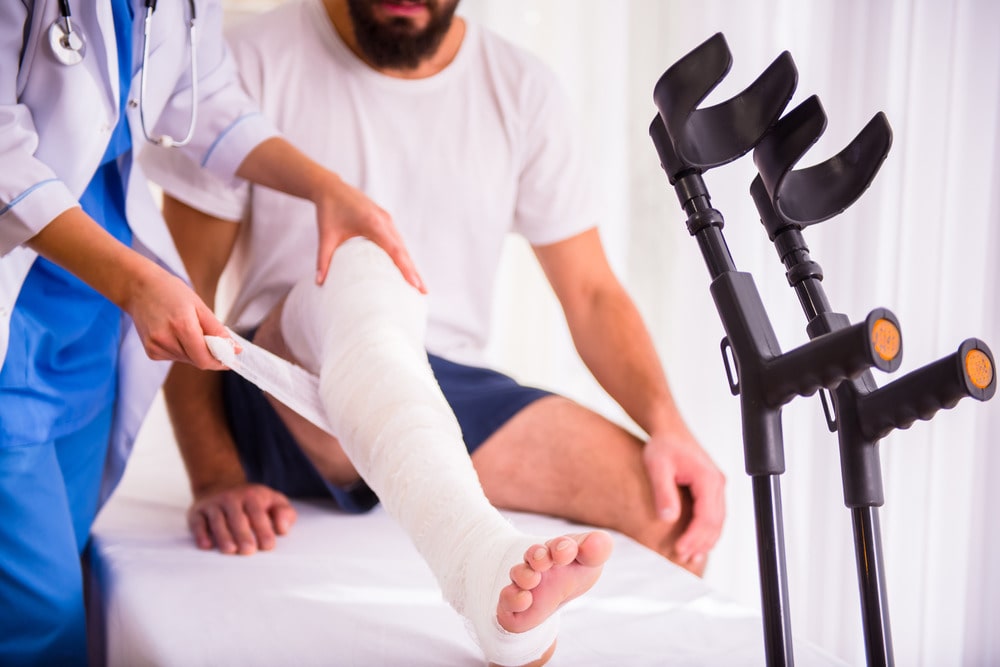Casey is a founding partner at River Run Law Group. Casey has tried numerous cases across the Commonwealth in both General District Court and Circuit Court. He has earned millions of dollars for his clients through trials, mediations, and settlements.
Car accidents can happen out of nowhere, and even with seatbelts and airbags, they often leave people with serious injuries. Some of the most common broken bones in car accidents can make it hard to go about your daily routine and may take weeks or months to heal.
If you or someone you care about has experienced car accident fractures, it’s important to know what to expect. From understanding the most frequently broken bones to exploring treatment options and legal claims, River Run Law is here to help guide you every step of the way.
Common Types of Car Accident Fractures
Not all broken bones are the same, and certain body parts are more likely to get injured during a collision. Here are some of the most common broken bones in car accidents:
- Arms and wrists—bracing yourself on the steering wheel or dashboard can easily lead to fractures in your arms, wrists, or hands;
- Leg, knee, and ankle—the force of impact, especially in front-end crashes, often leaves legs and ankles vulnerable;
- Clavicle (collarbone)—the collarbone, which runs between your shoulder and chest, can break due to the seatbelt’s pressure or impact with the steering wheel;
- Ribs—seatbelts and airbags protect you, but they can also lead to cracked ribs, which make breathing uncomfortable;
- Facial and nasal—airbag deployment or hitting the dashboard can result in broken noses or cheekbones; and
- Spinal—rear-end collisions or side impacts can compress the spine, causing vertebrae fractures that require extra care.
Each of these car accident fractures requires different broken bone treatment and recovery plans, which can shape the legal process when seeking compensation.
Recognizing Broken Bone Symptoms After a Crash
Not all broken bones are immediately apparent after an accident. Sometimes, broken bone symptoms take a little while to show up. Here’s what to watch for:
- Pain or swelling—pain in the injured area is usually the first sign something’s wrong, and swelling tends to follow;
- Bruising or discoloration—after an injury, bruises might form, and the area may look discolored or swollen;
- Limited movement—moving the injured body part might feel stiff or even impossible;
- Visible deformity—the bone may look out of place or cause the affected area to appear bent or misshapen; and
- Numbness or tingling—if a nerve is involved, you might experience a pins-and-needles sensation or numbness around the injury.
If you notice any of these broken bone symptoms, it’s a good idea to get checked out by a doctor. Sometimes, even minor discomfort can point to more serious issues that need attention.
What to Expect from Broken Bone Treatment and Recovery
Recovering from car accident fractures can look different depending on the type of break, but most broken bone treatment plans include a few key steps:
- Casts or braces—these are used to hold the bone in place while it heals;
- Physical therapy—once the bone has started healing, therapy can help restore movement and strength;
- Surgery—some fractures need surgery to realign the bone or repair damaged tissue using screws, plates, or pins; and
- Pain management—over-the-counter medications or prescriptions can help make the healing process more comfortable.
How long it takes to recover depends on the injury. While broken ribs may heal in a few weeks, more serious car accident fractures, like spinal injuries, may take several months.
How Broken Bones Impact Legal Claims and Compensation
Broken bones not only take a physical toll—they also take a financial and emotional toll. Medical bills, missed work, and ongoing care can add up quickly. In Virginia, if someone else’s negligence caused the accident, you might be eligible to seek compensation to cover these costs.
Fractures are usually well-documented through medical records, making connecting your injury to the accident easier. Compensation for car accident fractures can include:
- Medical bills—covering treatment like hospital stays, surgeries, therapy, and follow-up care;
- Lost wages—if your injury keeps you from working, you can seek compensation for your missed income;
- Pain and suffering—this accounts for the physical discomfort and how your injury affects your daily life; and
- Future care needs—some injuries may require ongoing therapy or additional surgeries.
Virginia follows an at-fault insurance system, meaning the driver responsible for the accident must cover the costs of injuries and damages. The first step is filing a claim with the at-fault driver’s insurance company. However, Virginia also uses a contributory negligence rule, meaning if you’re found even slightly at fault, you may not receive compensation. This makes it especially important to build a solid case.
Why Legal Help Can Make a Difference
Broken bones take time to heal, and managing insurance claims during your recovery can be difficult to handle. A personal injury lawyer can help with the details, giving you space to focus on your recovery. They can assist with:
- Collecting evidence. This includes gathering medical records, accident reports, and witness statements to strengthen your claim.
- Managing conversations with insurance companies. A lawyer can handle communication with insurance adjusters to make sure they take your injuries seriously and don’t undervalue your claim.
- Calculating compensation. Lawyers factor in your current medical expenses and any future treatment, time away from work, and the impact the injury has on your daily life to ensure you receive fair compensation.
From gathering paperwork to negotiating with insurance companies, we handle the legal side so you can focus on your recovery.
Call 804-889-0500 for a Free Case Evaluation now
Contact River Run Law for Help with Car Accident Fractures
Recovering from a broken bone isn’t easy, and handling the legal side on your own can make it harder. That’s why we’re here—to take the legal burden off your shoulders so you can focus on healing.
Casey Ariail and Brooke Alexander lead our firm and bring a unique combination of experience to every case.
Casey has helped clients recover millions through trials, mediations, and settlements, using his deep courtroom knowledge to build strong cases.
Brooke spent years working on the defense side, representing insurance companies in personal injury disputes. Her background gives us a distinct advantage, as she knows how insurers approach claims and what it takes to secure fair compensation for our clients.
We’ve worked with clients across Richmond and throughout Virginia, helping them recover from serious injuries and move forward. If you’ve broken a bone in a car accident, we’re here to help you, too.
Contact River Run Law today for a free consultation. Let us take care of the legal process so you can focus on what matters most—your recovery.
Where You Can Find Our Richmond, VA Office



